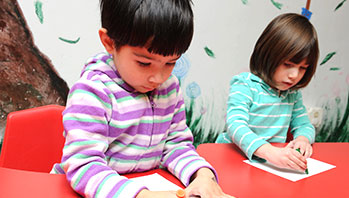- chart paper
- City Lullaby (book)
- markers
- sound
MA Standards:
Language/L.PK.MA.6: Use words and phrases acquired through conversations, listening to books read aloud, activities, and play.
Mathematics/Counting and Cardinality/PK.CC.MA.1: Listen to and say the names of numbers in meaningful contexts.
Head Start Outcomes:
Logic and Reasoning/Reasoning and Problem Solving: Recognizes cause and effect relationships.
Logic and Reasoning/Reasoning and Problem Solving: Classifies, compares, and contrasts objects, events, and experiences.
PreK Learning Guidelines:
Science and Technology/Living Things and Their Environment 15: Use their senses of sight, hearing, touch, smell, and taste to explore their environment using sensory vocabulary.
Science and Technology/Inquiry Skills 4: Record observations and share ideas through simple forms of representation such as drawings.
Mathematics/Number Sense 1: Listen to and say the names of numbers in meaningful contexts.
Mathematics/Number Sense 3: Use positional language and ordinal numbers (first, second, third) in everyday activities.
Draw and Write Together: City Sounds

© Commonwealth of Massachusetts, Department of Early Education and Care (Jennifer Waddell photographer). All rights reserved.
STEM Key Concepts: Sounds have a source; Different objects make different sounds; Sounds vary in three ways: volume, pitch, and timbre
ELA Focus Skills: Counting, Speaking and Listening
Educator Prep: Prepare the "Our School Sounds" chart following the template below. Display it where children can reach it.
Reread City Lullaby by Marilyn Singer with children. Pause when you get to the page with the number 1.
- Create a number chart with children as you continue to read. Have a volunteer write each number as you read each line.
- As you read, point to each number and ask children to read it along with you. Continue until you reach the number ten.
Then tell children they will make a group chart of “Our School Sounds."
- Explain to children that you want them to think of different sounds they hear at school—inside or outside.
- Tell children they will have time to illustrate the chart after they describe each sound.
Demonstrate for children how they will complete the chart by modeling the numbers 10 and 9. Say, Ten children laughing. Nine lunch bells ringing.
"Our School Sounds"
10 children laughing
9 lunch bells ringing
8
7
6
5
4
3
2
1
After the chart is complete, point to each line and read it aloud. On the next reading, have children act out each number. (for example, laugh ten times) Then invite children to draw pictures of each object beside the number.
Take It Further: Have 10 children get in a group and have them laugh after you read the number 10 line. For example, group 10 children together; read the line "10 children laughing" and have the group laugh together. Continue forming other groups and have children act out each line.
